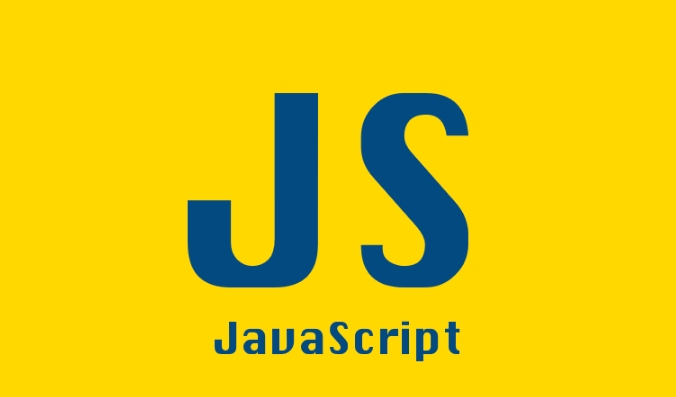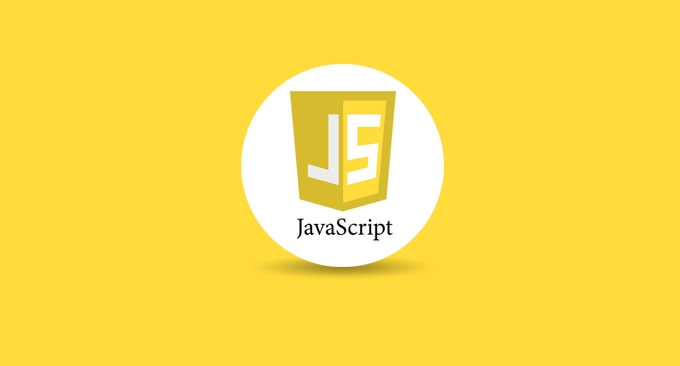 Web Front-end
Web Front-end
 JS Tutorial
JS Tutorial
 Leveraging Array.prototype Methods for Data Manipulation in JavaScript
Leveraging Array.prototype Methods for Data Manipulation in JavaScript
Leveraging Array.prototype Methods for Data Manipulation in JavaScript
Jul 06, 2025 am 02:36 AMJavaScript array built-in methods such as .map(), .filter() and .reduce() can simplify data processing; 1) .map() is used to convert elements one to one to generate new arrays; 2) .filter() is used to filter elements by condition; 3) .reduce() is used to aggregate data as a single value; misuse should be avoided when used, resulting in side effects or performance problems.

When you're working with arrays in JavaScript, you don't have to write loops from scratch every time. The built-in methods on Array.prototype can do a lot of the heavy lifting for you — if you know how and when to use them.

What Are Array.prototype Methods?
These are functions available to all array instances in JavaScript. Common ones include .map() , .filter() , .reduce() , .forEach() , and .find() . They allow you to process or transform data without writing traditional for loops, making your code cleaner and more declarative.

For example:
- Use
.map()when you want to create a new array by transforming each element. - Use
.filter()when you need to remove elements that don't meet a condition. - Use
.reduce()when you need to condense an array into a single value (like summing numbers or grouping items).
These aren't just syntactic sugar — they help express intent clearly and reduce bugs from manual loop management.

When to Use .map() vs. .filter() vs. .reduce()
Each method has its own purpose:
-
.map()is for transforming values ??one-to-one.const doubled = [1, 2, 3].map(n => n * 2); // [2, 4, 6]
.filter()keeps only what you need.const evens = [1, 2, 3, 4].filter(n => n % 2 === 0); // [twenty four]
.reduce()is more flexible but often misunderstood. It's good for aggregating data, flattening arrays, or building complex structures.const sum = [1, 2, 3].reduce((acc, val) => acc val, 0); // 6
Use these together when needed:
const total = [10, 20, 30, 40] .filter(n => n > 15) .map(n => n * 0.1) .reduce((sum, val) => sum val, 0); // 9
It's common to chain these methods when processing real-world data like API responses or user input.
Avoiding Common Pitfalls
Even experienced developers sometimes misuse these methods. Here are some gotchas:
- Forgetting that
.map()always returns a new array of the same length — it's not for side effects. - Using
.forEach()when you really need a transformed array (use.map()instead). - Overusing
.reduce()when a simpler method would work. - Mutating the original array unintentionally (methods like
.sort()and.reverse()do this).
Also, keep in mind performance:
- Don't chain multiple
.map()calls in sequence — prefer one.map()with combined logic. - Avoid deep nesting inside callbacks; break logic into helper functions for readability.
If you're dealing with large datasets, consider using libraries like Ramda or lodash/fp that offer optimized functional utilities.
That's the core of working with array methods effectively. These tools are powerful, but clarity matters more than cleverness. Keep it simple, and you'll save yourself debugging time later.
The above is the detailed content of Leveraging Array.prototype Methods for Data Manipulation in JavaScript. For more information, please follow other related articles on the PHP Chinese website!

Hot AI Tools

Undress AI Tool
Undress images for free

Undresser.AI Undress
AI-powered app for creating realistic nude photos

AI Clothes Remover
Online AI tool for removing clothes from photos.

Clothoff.io
AI clothes remover

Video Face Swap
Swap faces in any video effortlessly with our completely free AI face swap tool!

Hot Article

Hot Tools

Notepad++7.3.1
Easy-to-use and free code editor

SublimeText3 Chinese version
Chinese version, very easy to use

Zend Studio 13.0.1
Powerful PHP integrated development environment

Dreamweaver CS6
Visual web development tools

SublimeText3 Mac version
God-level code editing software (SublimeText3)
 Understand how to define arrays in PHP
Mar 13, 2024 pm 02:09 PM
Understand how to define arrays in PHP
Mar 13, 2024 pm 02:09 PM
Title: How to define arrays in PHP and specific code examples Arrays in PHP are a very important data type that can store multiple values ??and can be accessed based on index or key value. In PHP, there are many ways to define arrays. This article will introduce some of the commonly used methods and provide specific code examples to help understand. 1. Indexed array Indexed array is the most common array type, whose elements are accessed through numerical indexes. In PHP, you can use the array() function or the simplified [] symbol to define
 In-depth understanding of the practical application of array methods in Go language
Mar 24, 2024 pm 12:36 PM
In-depth understanding of the practical application of array methods in Go language
Mar 24, 2024 pm 12:36 PM
As a fast, concise and efficient programming language, Go language has powerful tools and functions to process arrays. In Go language, an array is a fixed-length data structure that can store a set of data elements of the same type. This article will explore array methods in Go language and provide specific practical application examples. 1. Declaring and initializing arrays In Go language, declaring and initializing an array can be done in the following ways: //Declare an array containing 5 integers vararr[5]int//
 Master the common problems and solutions of array methods in Go language
Mar 23, 2024 pm 09:21 PM
Master the common problems and solutions of array methods in Go language
Mar 23, 2024 pm 09:21 PM
Common problems and solutions for mastering array methods in Go language. In Go language, array is a basic data structure, which consists of fixed-length elements of the same data type. When writing Go programs, we often use arrays to store a set of data. However, due to the characteristics and limitations of arrays in the Go language, some problems are more difficult when dealing with arrays. This article will introduce some common array problems and corresponding solutions, and provide specific code examples. Question 1: How to declare and initialize an array? In Go language, you can
 Leveraging Array.prototype Methods for Data Manipulation in JavaScript
Jul 06, 2025 am 02:36 AM
Leveraging Array.prototype Methods for Data Manipulation in JavaScript
Jul 06, 2025 am 02:36 AM
JavaScript array built-in methods such as .map(), .filter() and .reduce() can simplify data processing; 1) .map() is used to convert elements one to one to generate new arrays; 2) .filter() is used to filter elements by condition; 3) .reduce() is used to aggregate data as a single value; misuse should be avoided when used, resulting in side effects or performance problems.
 What is the difference between some() and every() array methods?
Jun 25, 2025 am 12:35 AM
What is the difference between some() and every() array methods?
Jun 25, 2025 am 12:35 AM
some()returnstrueifatleastoneelementpassesthetest,whileevery()returnstrueonlyifallelementspass.1.some()checksforatleastonematchandstopsearly,usefulforexistencecheckslikevalidatingactiveusersorout-of-stockproducts.2.every()ensuresallelementsmeetacondi
 How does the reduce() array method work and what is a good use case for it?
Jul 07, 2025 am 01:33 AM
How does the reduce() array method work and what is a good use case for it?
Jul 07, 2025 am 01:33 AM
Thereduce()methodinJavaScriptisapowerfularraytoolthatreducesanarraytoasinglevaluebyapplyingareducerfunction.1.Ittakesanaccumulatorandcurrentvalueasrequiredparameters,andoptionallyaninitialvalue.2.Commonusesincludecalculatingtotals,groupingdata,flatte
 Advanced JavaScript Array Methods for Data Transformation
Jul 16, 2025 am 02:23 AM
Advanced JavaScript Array Methods for Data Transformation
Jul 16, 2025 am 02:23 AM
JavaScript array methods such as map, filter and reduce can effectively simplify data processing. 1. Map is used to convert array elements and return a new array, such as extracting fields or modifying format; 2. Filter is used to filter elements that meet the conditions and return a new array, suitable for filtering invalid values or specific conditional data; 3. Reduce is used for aggregation operations, such as summing or statistics, you need to pay attention to setting the initial value and correctly returning to the accumulator. These methods do not change the original array, support chain calls, and improve code readability and maintenance.
 Mastering JavaScript Array Methods: `map`, `filter`, and `reduce`
Aug 03, 2025 am 05:54 AM
Mastering JavaScript Array Methods: `map`, `filter`, and `reduce`
Aug 03, 2025 am 05:54 AM
JavaScript's array methods map, filter and reduce are used to write clear and functional code. 1. Map is used to convert each element in the array and return a new array, such as converting Celsius to Fahrenheit; 2. Filter is used to filter elements according to conditions and return a new array that meets the conditions, such as obtaining even numbers or active users; 3. Reduce is used to accumulate results, such as summing or counting frequency, and the initial value needs to be provided and returned to the accumulator; none of the three modify the original array, and can be called in chain, suitable for data processing and conversion, improving code readability and functionality.





